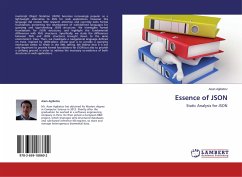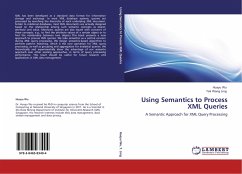
Essence of JSON
Static Analysis for JSON
Versandkostenfrei!
Versandfertig in 6-10 Tagen
24,99 €
inkl. MwSt.

PAYBACK Punkte
12 °P sammeln!
JavaScript Object Notation (JSON) becomes increasingly popular as a lightweight alternative to XML for web applications. However this language did receive little research attention and currently lacks formal foundations preventing the development of well-defined languages for querying and type-checking JSON structures. We investigate formal foundations for JSON structures, and highlight the fundamental differences with XML structures. Specifically, we study the differences between XML and JSON structures brought down to the same environment: trees. Then, we investigate a navigational language ...
JavaScript Object Notation (JSON) becomes increasingly popular as a lightweight alternative to XML for web applications. However this language did receive little research attention and currently lacks formal foundations preventing the development of well-defined languages for querying and type-checking JSON structures. We investigate formal foundations for JSON structures, and highlight the fundamental differences with XML structures. Specifically, we study the differences between XML and JSON structures brought down to the same environment: trees. Then, we investigate a navigational language defined on trees, inspired by JSON:select, whose goal is to provide a querying mechanism similar to XPath in the XML setting. We believe that it is not only important to provide formal foundations for JSON but also to provide a unifying ground in order to address the necessary co-existence of both structures in web applications.












